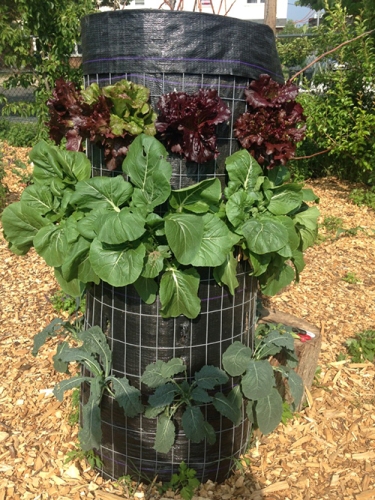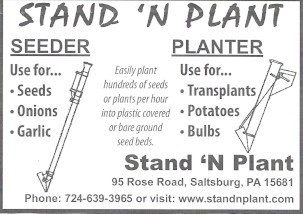
Having only a small amount of growing space doesn’t have to mean you can’t grow much. With a little creativity, you can grow a lot more by gardening vertically.
With just a little help, many flowers and vegetable plants can be grown vertically. Vining plants are especially suited to vertical gardening and they will readily climb a trellis or fence.
Cages, poles, arbors, fences and even walls can be used to grow plants vertically. Hanging baskets are another form of vertical gardening, with the plants growing downward rather than upward. If you want to grow cherry tomatoes this summer but don’t have room for a garden, you might try growing them in hanging baskets on your patio or balcony.
Tomato plants will be easier to care for if they are trellised or grown in cages. The fruit will stay clean if the plants aren’t left to sprawl on the ground, and the improved air circulation will help deter fungal diseases. Fragile pepper plants also benefit from growing in cages that will protect their fragile stems from breaking under a heavy load of peppers.
Cucumber plants grown in a cage or on a trellis will produce nice, straight fruit. Squash, melons and gourds can also be trained to grow on a fence or trellis, although you may have to create slings to support the heavier fruit as it matures. Mini pumpkins would be very attractive growing on a fence, but you might want to keep your giant pumpkins on the ground. Their heavy weight could pull down a fence or trellis.
Teepees for pole beans, vining peas or morning glories can be made by lashing the tops together on three or more long bamboo poles. Pole beans will also happily climb up corn stalks, tall sunflowers or up strings secured to a low roof or second-floor balcony.
When you plant vertically, keep in mind that the vertical planting will also cast a shadow. Give careful thought to what will grow on the shady side of the vertical planting. This would be a good spot for growing cool-season plants that would benefit from a little shade, such as lettuce.
A vertical garden can be used to block an unattractive view and a vertical garden can also be more accessible to gardeners with disabilities.
Mike McGroarty is the owner of McGroarty Enterprises and the author of several books. You can visit his website at Freeplants.com and read his blog at Mikesbackyardnursery.com.
Related Articles & Free Email Newsletter
A Secret Bed Building and Potting Soil Recipe




Comment here